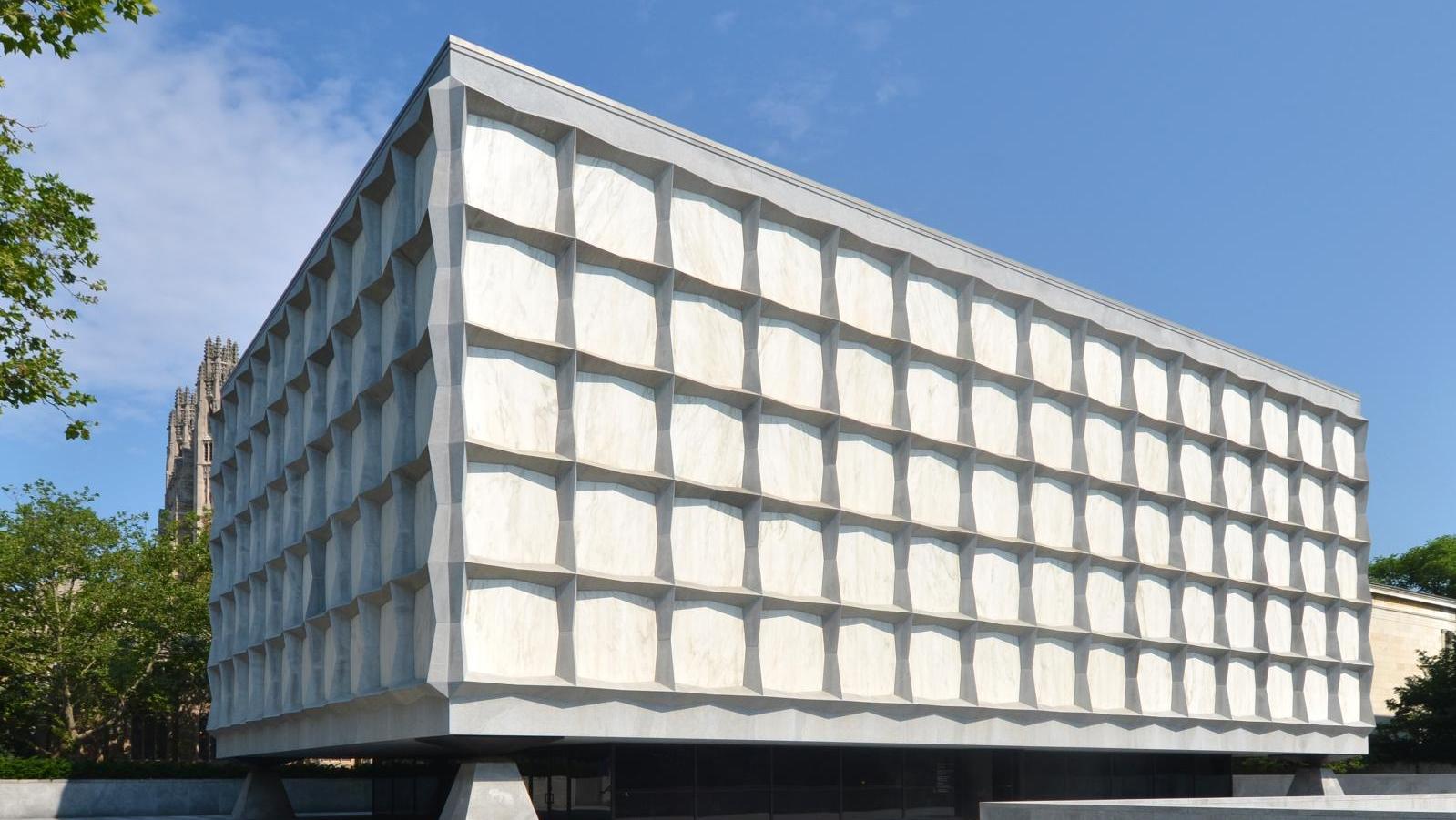Established in 1963, the Beinecke is one of the world’s largest libraries devoted to rare books and manuscripts. As a major force on the international market for archival materials, its annual acquisitions continue to expand both existing and new subject areas.
Considered the crown jewel of the Yale University Library system, the Beinecke is the University’s principal repository of literary archives, early manuscripts, and rare books. It was created in 1963 through the gift of three Yale alumni: Edwin J. Beinecke, Frederick W. Beinecke, and Walter Beinecke. Today, the Library serves both Yale and an international scholarly community, attracting nearly 10,000 researchers per year. In addition, it hosts special exhibitions, readings, and concerts. It is also the granting institution of the Bollingen Prize for Poetry, awarded biannually, as well as the Windham-Campbell Prizes for fiction, nonfiction, poetry, and drama, awarded annually. For the past two decades, the Beinecke has been working to make its holdings available to a wider audience through expanding its digital collections and building a vast archive of online exhibitions.
The Beginnings of the Yale Library The origins of the Yale Library extend back to the Reverend John Davenport, one of the founders of the New Haven Colony in 1637 and a proponent of the creation of a college for clergymen. James Pierpont, one of the ten founders of the Collegiate School that would become Yale College, purchased Davenport’s collection and included…
com.dsi.gazette.Article : 19849
This content is for subscribers only
You still have 85% left to read.
